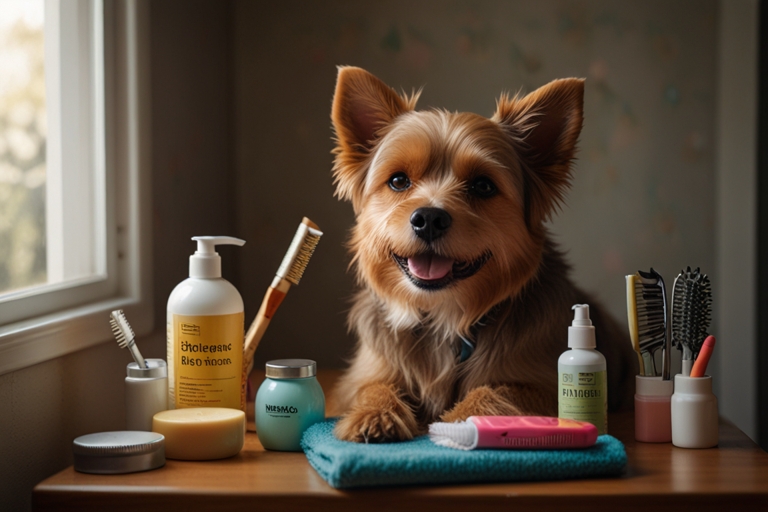Best Practices for Grooming Your Pets at Home
Introduction
Best Practices for Grooming Your Pets at Home! Grooming your pets at home is not only essential for their hygiene but also a wonderful way to bond with them. Regular grooming helps keep your pets healthy and comfortable while enhancing their appearance. This guide outlines best practices to make the grooming process enjoyable and effective for both you and your furry friends.
Understanding Pet Grooming
Pet grooming involves a variety of tasks, including brushing, bathing, nail trimming, and ear cleaning. Each of these tasks contributes to your pet’s overall health and well-being. Understanding your pet’s specific grooming needs based on their breed, coat type, and age is crucial for effective grooming.
Essential Grooming Tools
Investing in the right grooming tools is key to a successful grooming session. Here are some essentials:
– **Brushes and Combs**: Choose brushes based on your pet’s coat type (e.g., slicker brushes for long-haired pets, bristle brushes for short-haired ones).
– **Nail Clippers**: Use pet-specific nail clippers or grinders for safe trimming.
– **Shampoo**: Opt for gentle, pet-friendly shampoos for bathing.
– **Ear Cleaning Solution**: A veterinarian-approved solution is best for maintaining ear health.
– **Towels and Grooming Apron**: Keep towels handy for drying and an apron for your own protection.
**Best Practices for Grooming Dogs**
Brushing**: Brush your dog regularly to remove loose fur and prevent matting. Long-haired breeds may need daily brushing, while short-haired breeds might require it weekly.
– **Bathing**: Bathe your dog every 4-6 weeks or as needed. Use lukewarm water and a gentle shampoo, ensuring you rinse thoroughly.
– **Nail Trimming**: Trim nails every 3-4 weeks. Be cautious not to cut too close to the quick, as this can cause bleeding.
– **Ear Cleaning**: Check and clean ears regularly to prevent infections. Use a cotton ball with ear cleaning solution.
**Best Practices for Grooming Cats**
– **Brushing**: Regular brushing helps reduce shedding and hairballs. Long-haired cats may need daily grooming, while short-haired cats typically require it weekly.
– **Bathing**: Cats usually groom themselves, so bathing is rarely necessary. If needed, use a damp cloth to clean their fur or a dry shampoo formulated for cats.
– **Nail Trimming**: Trim your cat’s nails every 2-3 weeks, being careful to avoid the quick.
– **Ear Cleaning**: Check ears for dirt or wax buildup and clean with a vet-approved solution.
**Additional Grooming Practices**
– **Teeth Cleaning**: Brush your pet’s teeth regularly with toothpaste made for pets to prevent dental issues.
– **Anal Gland Expression**: Some pets may need their anal glands expressed regularly; consult your vet if you notice excessive scooting or licking.
**Creating a Positive Grooming Experience For Your Pets**
– **Start Slowly**: Introduce grooming gradually, using positive reinforcement like treats and praise.
– **Create a Calm Environment**: Choose a quiet space free from distractions to help your pet feel relaxed.
– **Short Sessions**: Keep grooming sessions short to prevent stress, gradually increasing the duration as your pet becomes accustomed.
**Monitoring Health During Grooming**
Grooming is an excellent opportunity to check for signs of health issues, such as lumps, bumps, or skin irritations. Regularly inspect your pet’s ears, skin, and paws while grooming, and note any abnormalities.
**Knowing When to Seek Professional Help**
While grooming at home is beneficial, some situations require professional assistance. If you’re unsure about grooming techniques, notice unusual health concerns, or if your pet is particularly anxious or aggressive during grooming, consult a professional groomer or veterinarian.
**Conclusion**
Grooming your pets at home can be a rewarding experience for both you and your furry companions. By following these best practices, you can ensure your pets stay clean, healthy, and happy while strengthening your bond with them. Regular grooming not only enhances their appearance but also contributes to their overall well-being.


